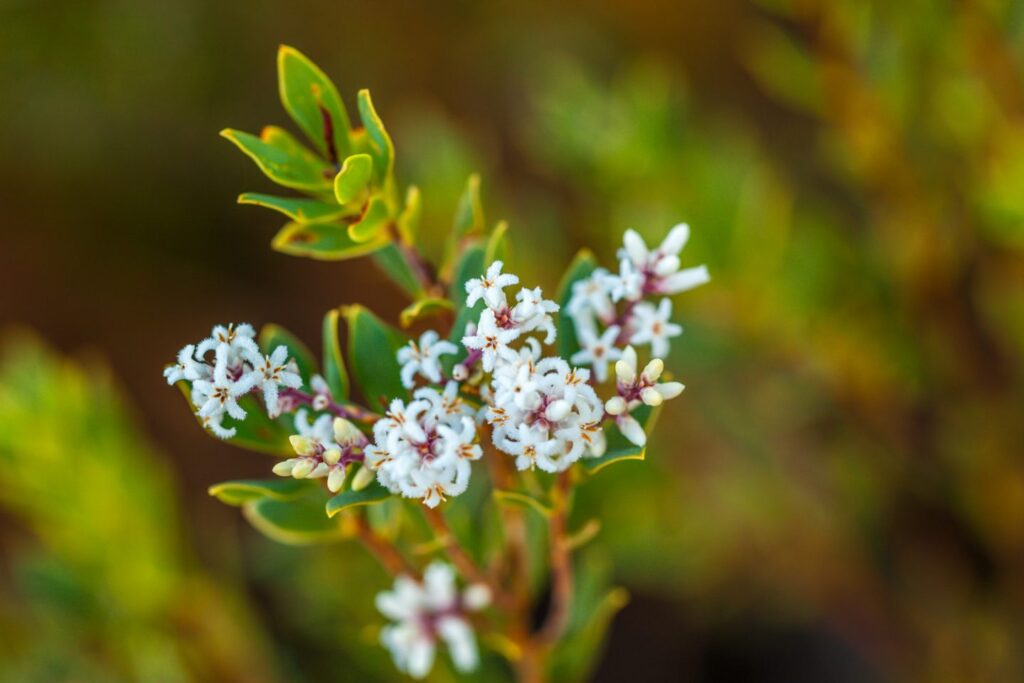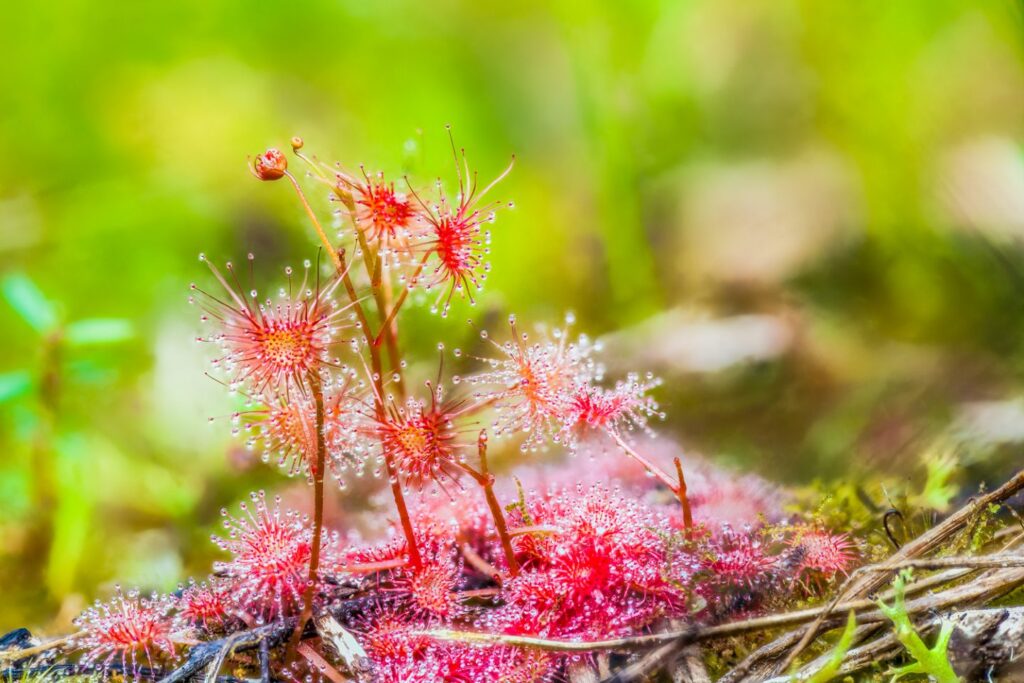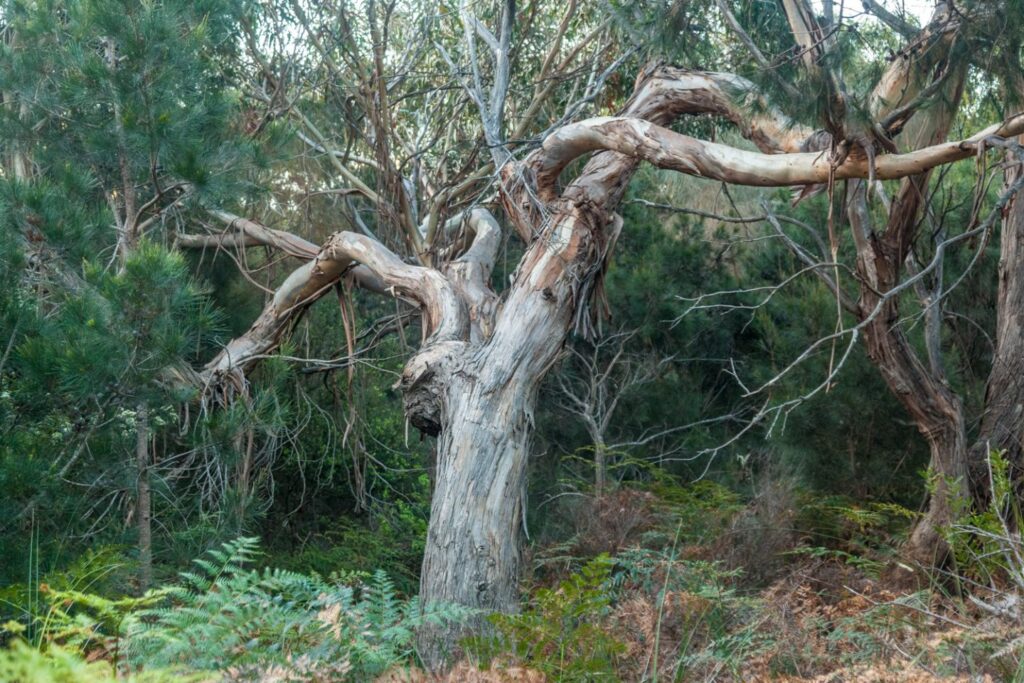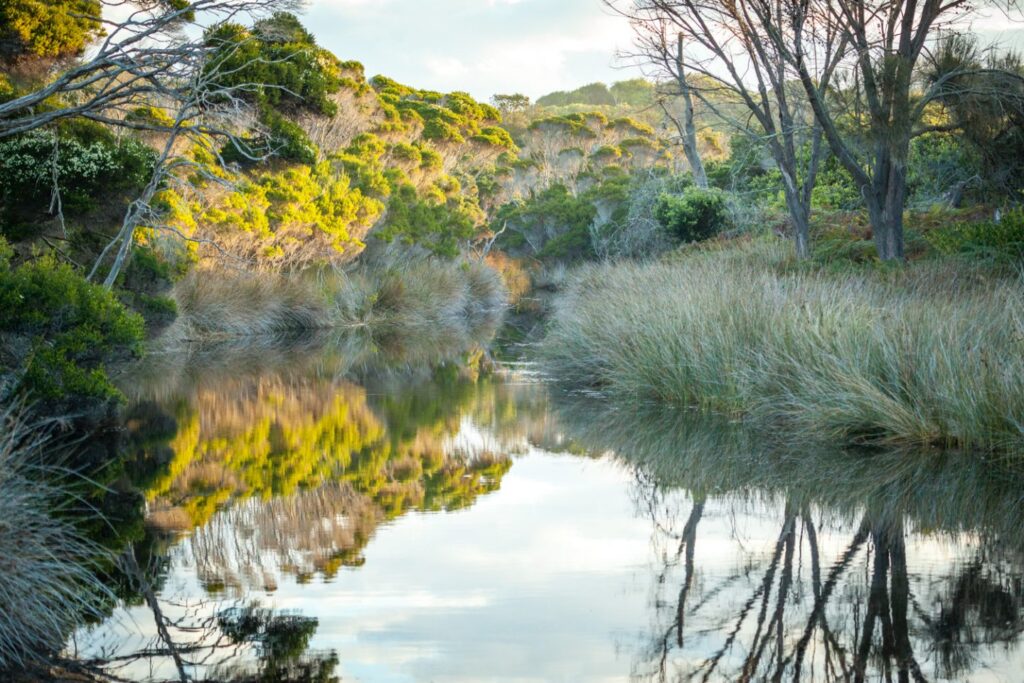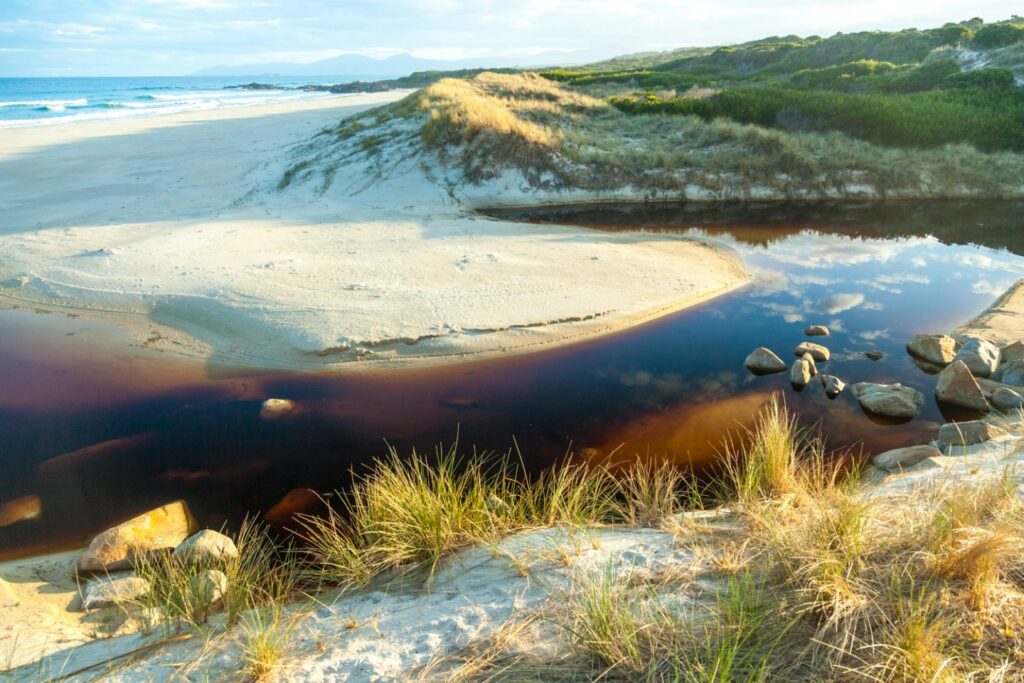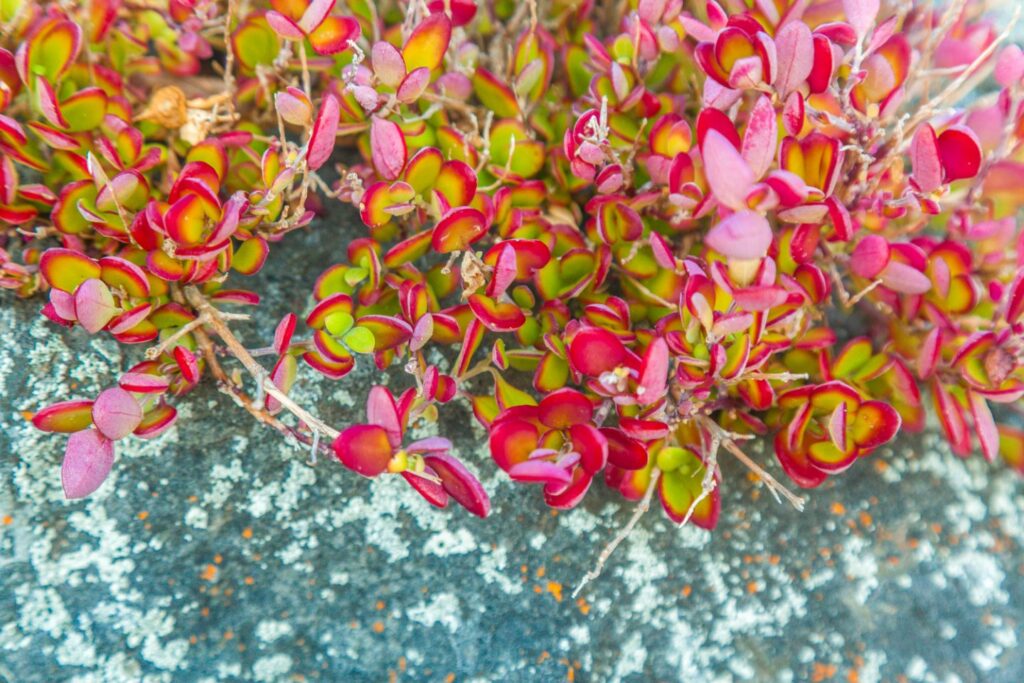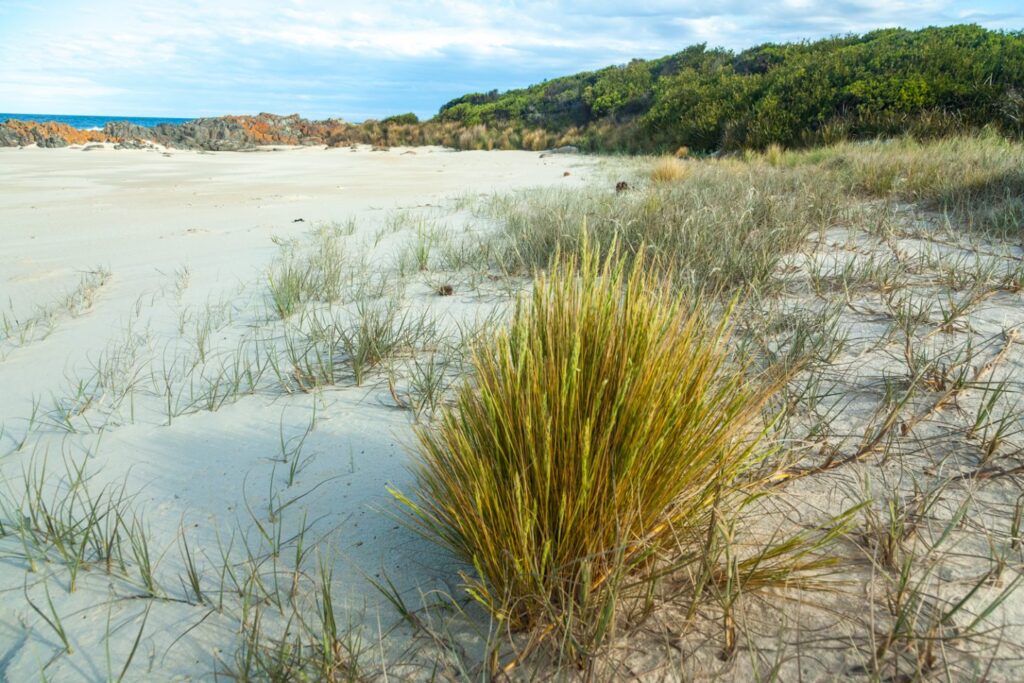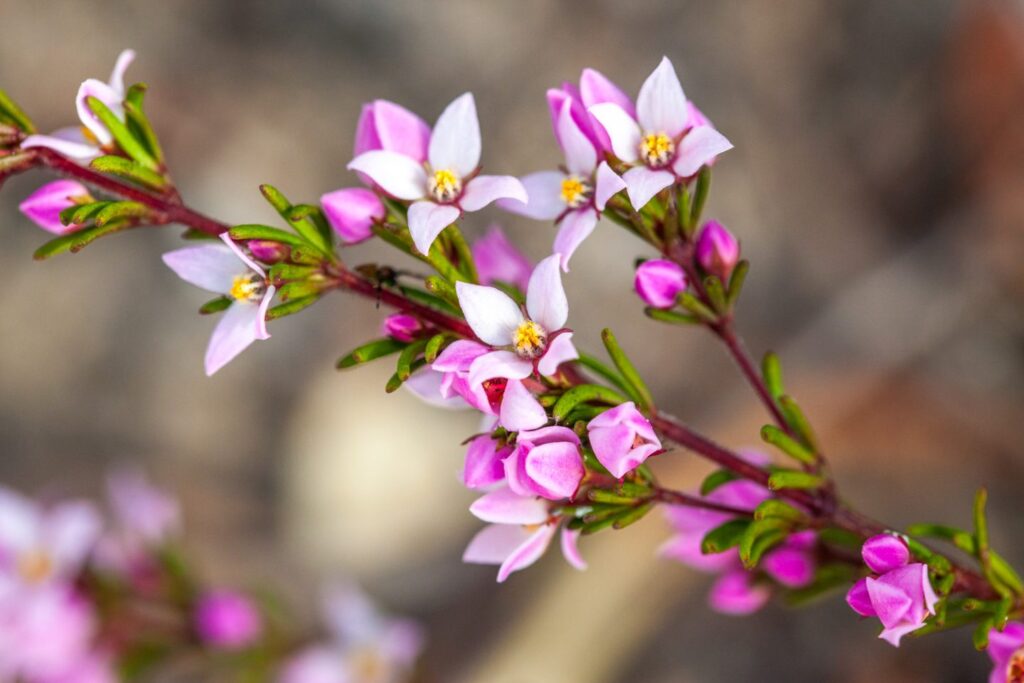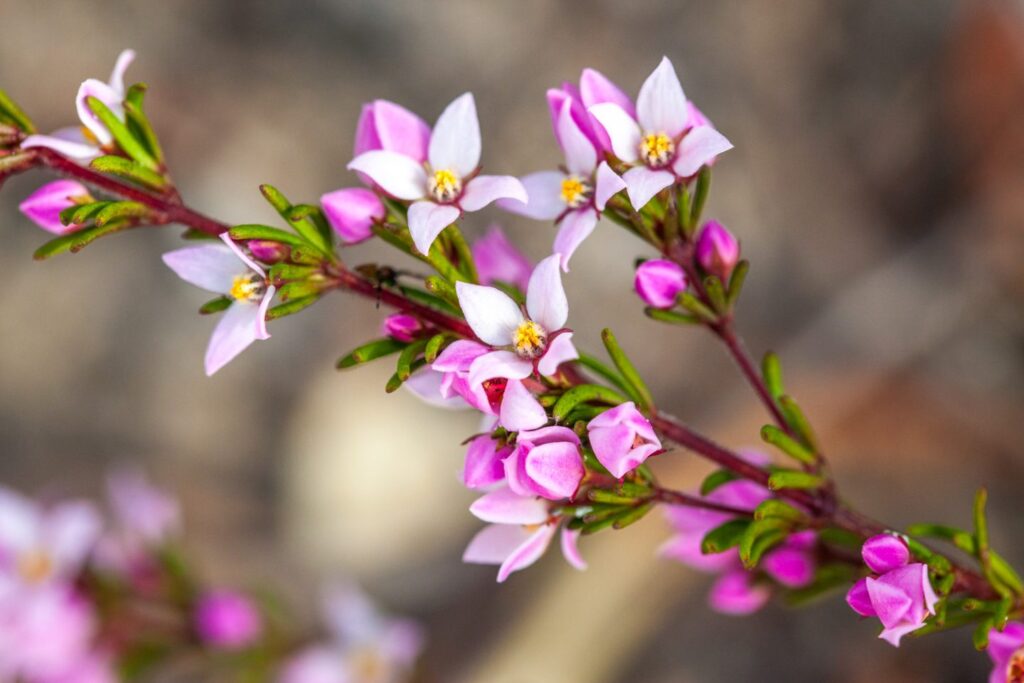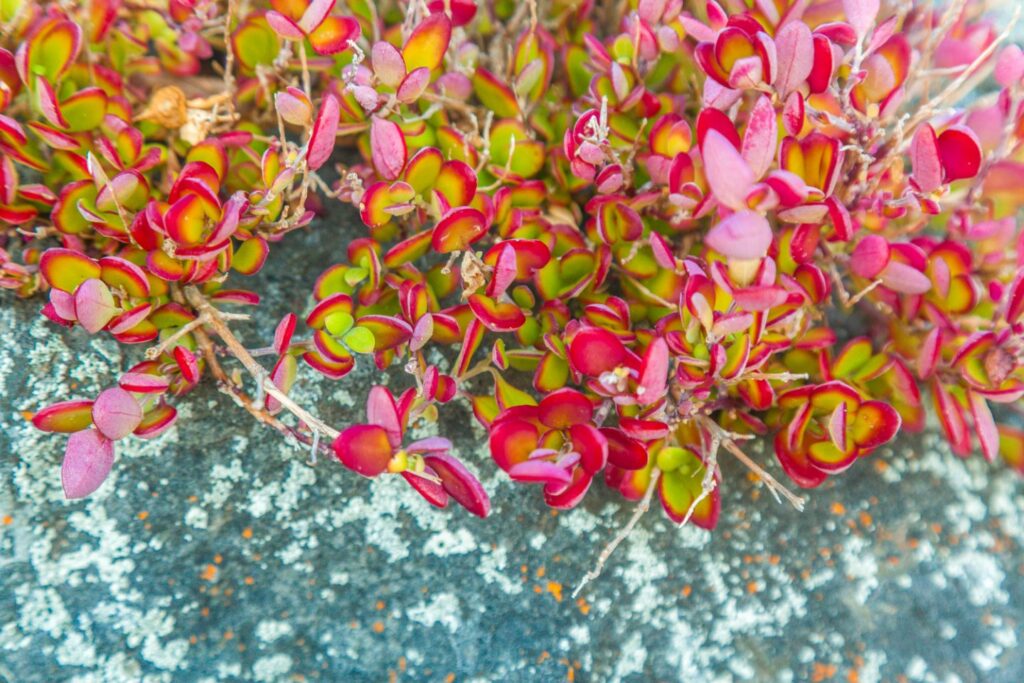In Tasmania’s north-east near the town of St Helens, Piano Coves is an 80-hectare reserve protecting a patchwork of threatened ecological communities on a remarkable coastline. This reserve was gifted to the TLC by the Elsie Cameron Foundation, along with funds for its conservation management. Piano Coves Reserve is nestled into a large matrix of coastal vegetation that extends south from Stiglitz along the coast and is composed of public and private reserves and private bushland. TLC has been working in this landscape to help protect other significant coastal areas, including Diana’s Basin, owned and managed by the Tasmanian Aboriginal Centre, and a Revolving Fund property, all of which contribute to the conservation of this lovely corner of the north-east coast.
HOLLOWS, HABITAT AND HEATHLAND
The vegetation here at Piano Coves Reserve is predominantly heathy shrub- and woodland, dominated by black peppermint coastal woodland and coastal scrub. Heathy vegetation grows on low-nutrient soils and tends to include a diverse range of shrubs. The result is a place where there are splashes of colour from wildflowers blooming across the seasons, including orchids, spikey heath plants and mature grasstrees. Thanks to the flowers, the birds are busy all year.
Over a quarter of the reserve is covered in threatened ecological communities, with the largest areas comprising the nationally critically endangered black gum forest, which is regenerating following being previously cut over, and the state threatened white gum–blue gum coastal woodland.
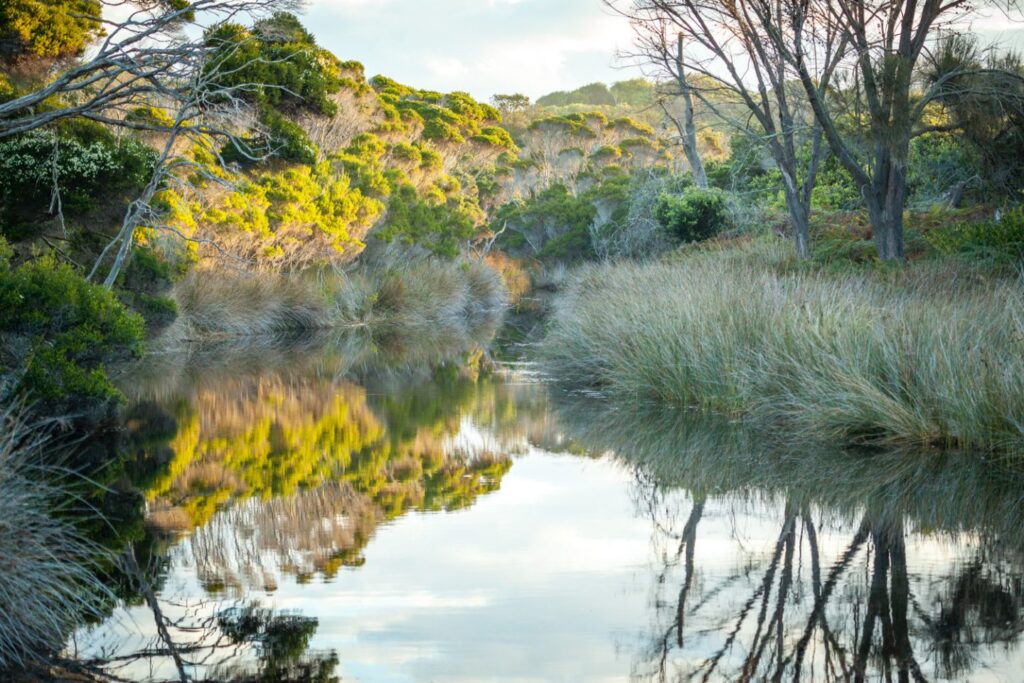
The spectacular coastline is habitat for the nationally vulnerable hooded plover. Tasmania is a stronghold for the species, with approximately 20% of the estimated 3,000 individuals occurring along north-east Tasmanian shorelines.
Wetlands, damp scrub and black gum forest provide important habitat niches for a variety of flora and fauna along this often-dry heathy coastline. A dam on the property supports native spike-sedges and marsh-flowers, including the rare erect marsh-flower (Liparophyllum exaltatum). The wetlands here support three frog species (Crinia signifera, Limnodynastes dumerilii, Litoria ewingii), water rats/rakali, as well as ten fish species. To the dam’s east, vulnerable white-bellied sea-eagles nest. And across the reserve there are old, hollow-bearing trees that provide homes for birds and marsupials.
CARING FOR PIANO COVES RESERVE
Piano Coves Reserve provides important habitat for many of our native species. However, there are also some management challenges, but with care and attention its native species will flourish and its habitat regenerate. There are some large patches of invasive Spanish heath across the reserve, but with ten years of successful volunteer-aided Spanish heath removal at Egg Islands Reserve, the TLC is well-equipped to deal with this weed.
